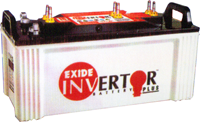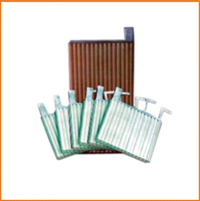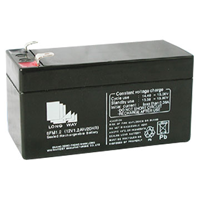Battery maintenance is very important when we use Home inverters. Generally Tubular batteries are recommended due to its high efficiency and life span. Various makes and types are of batteries are available in the market. . Tubular batteries are recommended to backup UPS and Inverters where environmental conditions are tough and ambient temperatures are common. These are capable of long hours of backup and the life period is around five years.
Battery is the backbone of the inverter. Maintenance free batteries come in Flat plate collectors and are totally maintenance free. These batteries have a typical life of 4 years if properly charged and maintained.
Tubular Battery
Tubular batteries high efficient types and they use active material ‘Lead oxide’ encapsulated in polyester tubes (hence the name) to prevent ‘Shadding’. The electrode geometry in tubular battery facilitates ‘Cyclic deep discharges’.
Tubular battery

Tubular battery Plates

UPS Battery

Lead – Acid Battery
Lead – Acid battery uses Sulphuric acid as the electrolyte. Specific gravity of the electrolyte is an important parameter to determine the efficiency of the battery. Specific gravity of the electrolyte is the weight of Sulphuric acid-water mixture compared to an equal volume of water. Pure water has the specific gravity of 1.

Battery capacity and Efficiency
Capacity of the battery is expressed in terms of Ampere hour (Ah). 1 Ah is equal to 3600 Coulombs. If the battery provides 1 Ampere current in 1 hour, its capacity is 1Ah.If it gives 1 Amp current for 100 hours, it is 100 Ah. The discharge rate of the battery depends on how much current is drained to drive the load. Typically a 100 Ah battery is rated to provide 5 Amps current for 20 hours.
The efficiency of the battery is different at different discharge rate. If the battery is not using for long periods, ‘Self discharge’ will takes place at the rate of 5 Amps per week. Therefore it is recommended to discharge and recharge the battery at least once in a week to keep it in top condition.
Power loss in Inverter and Current consumption during charging.
No inverter can function efficiently. The working of the inverter depends on many factors like conducted load, battery efficiency and maintenance. During operation, inverter will heat up and the transformer will dissipate heat. So some energy will be lost which reduces the efficiency.
Proper charging of the battery and its efficiency to hold charge are two very important aspects. Input voltage from the AC lines should be close to 230 volts for proper charging of the battery. Fully charged battery will show 13.5 volts. Inverter should switch on charging immediately when the battery voltage reduces to 12 volts. Charging current depends on the time taken to complete the charging process and also the ‘charge condition’ of the battery. If the battery is discharged to 80% of its efficiency, it will take 5 to 7 Ampere current for charging during the first few hours. Then the current reduces to 500 milli amperes or less. A fully charged battery will not take any current.
Most inverters have two mode charging-Boost charging and Trickle charging. During boost charging, around 5 to 7 ampere current will be utilized and during trickle charging only 25 to 50 milli ampere current will be utilized.
What type of battery is most efficient?
Inverter batteries are available in various forms. The capacity of the battery is based on its Ah (Ampere hour). It is the amount of current a battery can give during 1 hour of charge/discharge cycle. In inverters, high capacity (100Ah, 150Ah) batteries are used to give sufficient backup time.
The formula to calculate the Ah of battery is
Total load in watts / Voltage of the battery x Backup hours required.
If 400 watts load is running on a 12 volt battery for 3 hours, then the capacity of the battery should not be less than 100 Ah.
Ah = 400 W / 12 V x 3 = 100 Ah.
To increase the backup time, use 150 Ah battery or reduce the load from 400 W to 200 W or less.
Tips for proper maintenance
1. The battery surface should be clean and dust free. Clean it using backing soda-water mix (without touching the terminal posts).
2. Cable connections to the battery terminals should be kept cleaned and tightened.
3. Top up the battery using mineral free distilled water. Do not allow the water to over fill. Excess water will short circuit the battery plates. In tubular battery, water level indicators are attached. Periodically observe the water level.
4. To prevent corrosion, coat the connectors and exposed part of the cable using Vaseline or petroleum jelly.
5. Place the battery in a place where adequate ventilation is available and to observe periodically
6. Do not place any iron objects over the battery. It will cause short circuit and fire.
7. Do not try to remove the battery terminals if the inverter is switched on or connected to mains. Disconnect the battery terminals only after switching off the inverter and the mains supply. While removing the terminals, remove the negative terminal (Black) first. Take utmost care to prevent shorting of positive and negative terminals through the connecting cables. Always observe the polarity (polarity is indicated as Red colour or + mark for positive and Black or – mark near the terminals) while connecting the cables.
8. If the inverter is in the charged mode for more than 12 hours, it indicates that the battery is not accepting charge. If it happens, disconnect it and check the battery for its charge holding capacity.
courtesy:-http://dmohankumar.wordpress.com

No comments:
Post a Comment